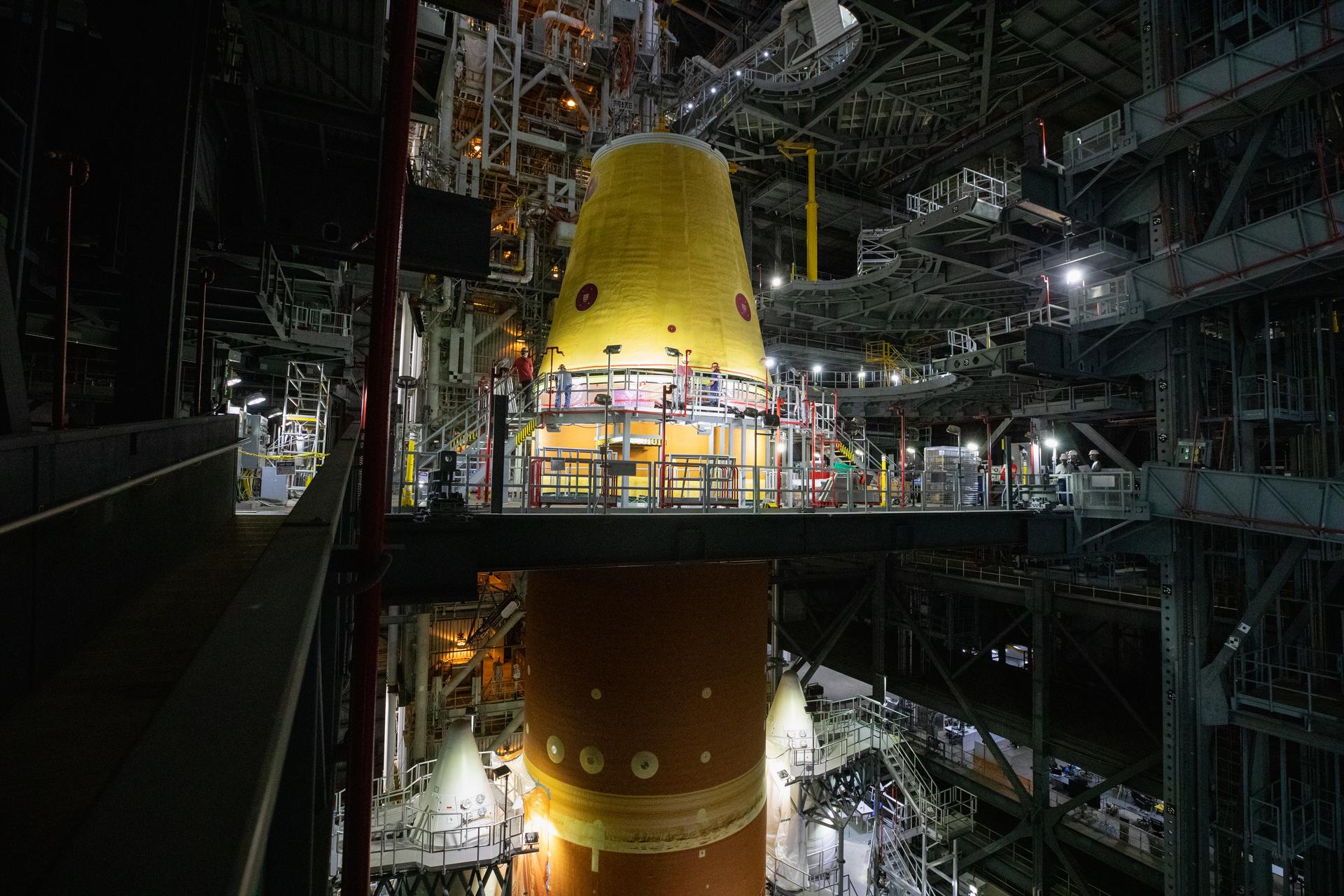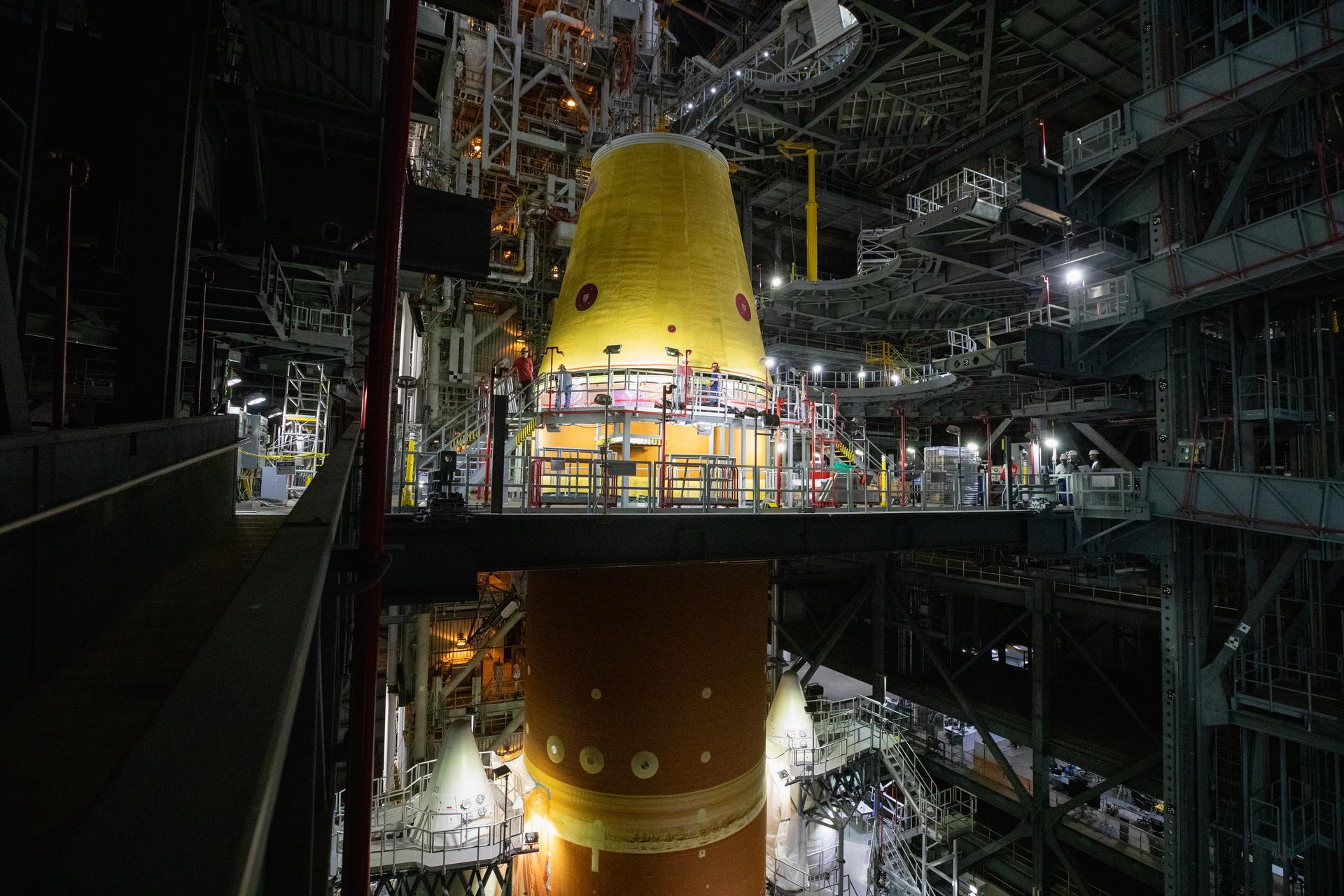
NASA’s Artemis II Moon rocket is taking shape following the successful integration of the launch vehicle stage adapter onto the SLS (Space Launch System) core stage on April 12 inside the Vehicle Assembly Building at the agency’s Kennedy Space Center in Florida. Technicians with NASA’s Exploration Ground Systems Program used a 325-ton crane to hoist the launch vehicle adapter almost 250 feet in the air and slowly lower it onto the core stage.
The cone-shaped adapter connects the interim cryogenic propulsion stage, which will propel the Artemis II test flight around the Moon, to the SLS core stage. During launch and ascent, the launch vehicle stage adapter provides structural support and protects avionics and electrical devices within the upper stage from extreme vibrations and acoustic conditions. Up next, teams will stack the interim cryogenic propulsion stage onto the launch vehicle stage adapter.
The stage adapter is manufactured by prime contractor Teledyne Brown Engineering, under the Amentum Space Exploration Division’s ESSCA (Engineering Services and Science Capability Augmentation) contract, using self-reacting friction-stir robotic and vertical weld tools at NASA’s Marshall Space Flight Center in Huntsville, Alabama. The launch vehicle stage adapter arrived at Kennedy in September of 2024 on NASA’s Pegasus barge.
The Artemis II test flight will take a crew of four astronauts on a 10-day journey around the Moon, helping confirm the foundational systems and hardware needed for human deep space exploration. The mission is the first crewed flight under NASA’s Artemis campaign and is another step toward missions on the lunar surface and helping the agency prepare for future human missions to Mars.


